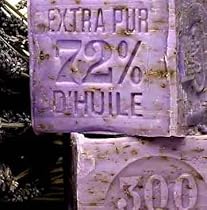Now that youve gathered together all of the basic equipment you will need, lets move on to choosing the ingredients necessary for that successful batch of soap. The best way to determine what type of soap you wish to make is to think long and hard about how you intend to use it. Are you just looking to make some nice sized bath bars? Or perhaps youre thinking of something more creative for a gift or Christmas present. What you desire your end product to be will tell you where you have to start. Here are a few tips to get you started.
The ingredients you select will determine the type of soap you end up with. Each type of oil carries with it its own specific properties.
Oils
Olive Oil: This oil is available in several grades, all of which are suitable for soap making. This oil makes a very hard, brittle soap, which dries quickly and is very long lasting. Soaps made from olive oil have a creamy, luxurious lather and are excellent for all skin types. Olive Oil soap originated in Spain and is also known as Castile Soap and is of very high quality.
Palm Oil: This oil varies in color from white, golden, orange to almost red. The color of the oil will affect the final color of your soap, though this will lessen as your bars dry. Palm oil can be found through many on-line suppliers, or in stores that feature Middle Eastern, Asian, or African foods.
Coconut Oil: Coconut oil is derived from the meat of the coconut. This oil melts readily when heated and can be found on-line or through many Asian grocers and large grocery stores. Coconut oil creates profuse suds, excellent for making hair shampoos, but because it has a tendency to dry the skin, it is often used in conjunction with other oils and/or fats.
Castor Oil: Expressed from the seed of the castor bean plant, castor oil is thick and medicinal in nature and is generally used as a supplement to other oils to add richness and mildness to your soap. It can be found in your local pharmacy.
Vegetable Oils: These oils are generally a combination of olive oil and other oils such as peanut, corn or soy. They are very inexpensive and generally give good results in soap making. Blended vegetable oils yield a softer soap than olive oil alone; they do not dry as quickly but do lather well.
Fats and Lard
Suet: Suet is the fat that surrounds the kidney of the cow. Good quality suet varies in color but should be white or slightly off-white with traces of pink, rather than gray. Suet, when rendered, produces hard tallow that is easy to work with and results in a relatively mild soap. Suet can be purchased from your local butcher or grocer and may be frozen until ready to use.
Beef Fat: Because beef fat is softer than suet, its tallow is not as high quality. Soaps from beef fat tend to be softer than soap made from suet and can be difficult to work with.
Tallow: Is the product that results from rendering fats and suet to remove the impurities. Soaps made from tallow are quite mild and produce small creamy bubbles.
Lard: Is fat rendered from pigs. You will commonly find lard in one pound packages at your local grocery store. This should be refrigerated or frozen until ready to use. The disadvantage of lard is that it does not lather well, so it generally combined with other fats or oils. Lard soaps are fairly hard to the touch and quite mild on the skin.
Kitchen Fats: For many there is something highly appealing about creating soaps with the left over fats from your kitchen; bacon grease drippings youve been collecting in a can or the leftovers from frying meats. These fats must be rendered just as you would suet. These types of soaps are truly for the heart of the adventurer, as you will never know quite what the final product will be. But if this does not concern you, then by all means experiment. One note of caution however, an excessive amount of chicken fat will make your soaps too soft!
Lye
The next ingredient you will need for making soap is Lye, also known as Sodium hydroxide. This is a caustic alkaline, which makes soap when it is combined with fats and/or oils. Traditionally, dripping water through wood ashes produced lye, but today it is manufactured commercially and provides us with a much more consistent product. While there are many on-line sites that sell lye specifically for soap making, I have always used the good old Red Devil Lye. This can be easily found in most hardware stores next to the drain cleaners.
The Final Ingredient
Lastly, you will need cold water for your soap making. Many recommend using distilled water, however since we happen to have well water rather than city water, I have always used water straight from the tap. If you feel your city water is overly processed with a strong smell of chlorine, you may wish to seriously consider buying distilled water for your soap making.
A Final Note
As you search through various soap making recipes, you will note that the vast majority combine two or more different types of fats or oils, in order to achieve the specific qualities of each ingredient. This guide should help you to evaluate those recipes in order to determine if it will be suitable for your needs.
In our next article we will be discussing potential additives to your soap such as colorants, scents, herbs and more. Until then, happy soap making.
household soap in french is mean savon de marseille








